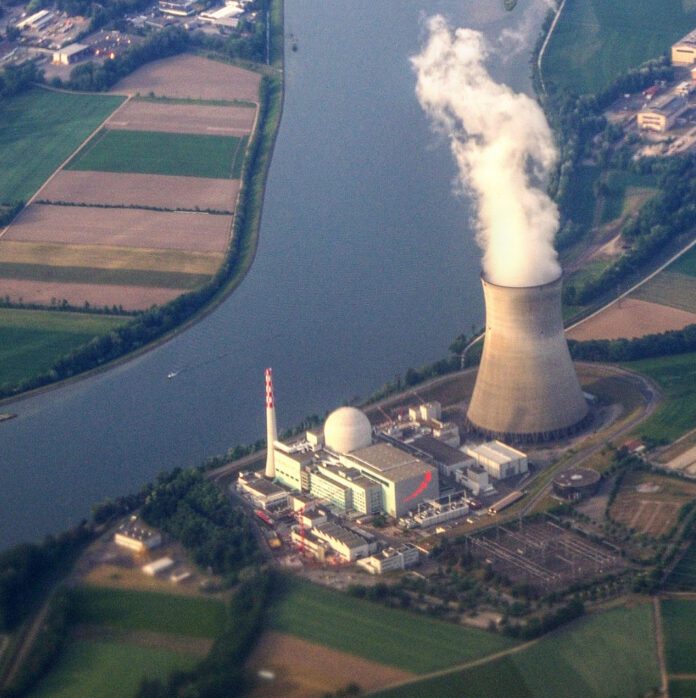
Propelling humanity into the future
Nuclear fission power is often a contentious issue, promising great hopes and also posing possible dangers. On the one hand, nuclear power plants can cause catastrophes and produce radioactive waste that is difficult to safely dispose of. On the other hand, utilizing the energy from fission can provide humanity with an incredible amount of energy without harming the earth’s environment. It also provides the possibility of reaching other planets through technology like nuclear thermal propulsion, which NASA aims to develop as soon as 2027 according to estimates made in January 2023.
After weighing their options, America has chosen to continue using nuclear power plants despite the dangers. In fact, we use fission to such an extent that these plants have “supplied about 20% of annual U.S. electricity generation since 1990,” according to the U.S. Energy Information Administration.
The most obvious contra-example to using nuclear energy is Chernobyl, where a nuclear energy plant in Ukraine exploded and melted, hospitalizing over two hundred people and killing over 30 either directly or through radiation. The radioactive contamination of the area resulted in the nearby city’s complete abandonment.
While nuclear proponents argue accidents like Chernobyl are too uncommon to hold any weight, the amount of destruction caused by just one mistake or technical hiccup is too large to ignore.
Ultimately, is the possible payoff worth the risk? The good news is that the risk may not be relevant for very much longer. The U.S. has been investing in nuclear power for nearly 80 years, and recent breakthroughs have paved the way for nuclear fusion as a possible replacement for fission.
In contrast to fission, fusion “does not create any long-lived radioactive nuclear waste,” according to the International Atomic Energy Agency, and at times only produces tritium, a short-lived radioactive isotope of hydrogen. Additionally, fusion cannot cause nuclear disasters to the same level as fission and is not capable of detonating on its own. Thus, this form of energy creation could permanently change the whole nuclear playing field, providing all the benefits of clean energy alongside safety.
For many of the 80 years since its inception, however, fusion has been far from a viable option. Fission is relatively easier to achieve, requiring the bombardment of heavier elements with neutrons until the nucleus breaks into smaller nuclei. When the bonds in the nucleus break, they release energy which is then harvested for use.
Fusion, however, is the complete opposite. Fusion achieves energy by combining elements, such as two hydrogen atoms, into a heavier element like helium. When the atoms merge, some of their mass is leftover and becomes energy. This is what happens in the sun and other stars, where they bond particles continually and thus achieve their high level of heat and light.
As one can imagine, it is a difficult task to create materials that can hold what is essentially a chunk of a star without being destroyed. Additionally, forcing two atoms together at such close proximity that they bond is much more difficult than causing a break. The plasma needs to be under constant pressure from magnetism or lasers, and the energy used to control and constrain it often uses up more energy than the reactions produce.
According to a CNN article on the topic, however, researchers at the National Ignition Facility in California produced a world-first, “nuclear fusion reaction that released more energy than it used” in 2022, and they went on to replicate this process three times in 2023.
The World Economic Forum published an article in 2023 listing many areas where fusion could revolutionize new progress for humanity. For one, fusion is an incredibly clean energy source and could solve many aspects of the climate crisis. Additionally, it is cheap and would provide an energy source for impoverished nations.
Fusion could also power the mass desalination of water, a project that has not been pursued due to the high levels of energy required. Thus, fusion could give drinkable water, electricity and a clean environment to those who need it.
Finally, as mentioned before, fusion could support nuclear propulsion and pro- vide an energy source for human bases on the moon, Mars and beyond. Mars is rich in deuterium, one type of neutron-light hydrogen that is very effective in fusion and which could be used for rocket refueling on the planet itself.
Thus, spaceflight and nuclear fusion could have a great symbiotic relationship, both expanding over time, side by side and promoting human flourishing wherever it takes us in the future.
There are still technical and commercial problems to smooth out and scientists note that fusion will remain off the market for at least a few more decades. However, I believe that these developments show that fusion is more than wishful thinking, it is on its way, and when it arrives, it will change the economy and technology forever.